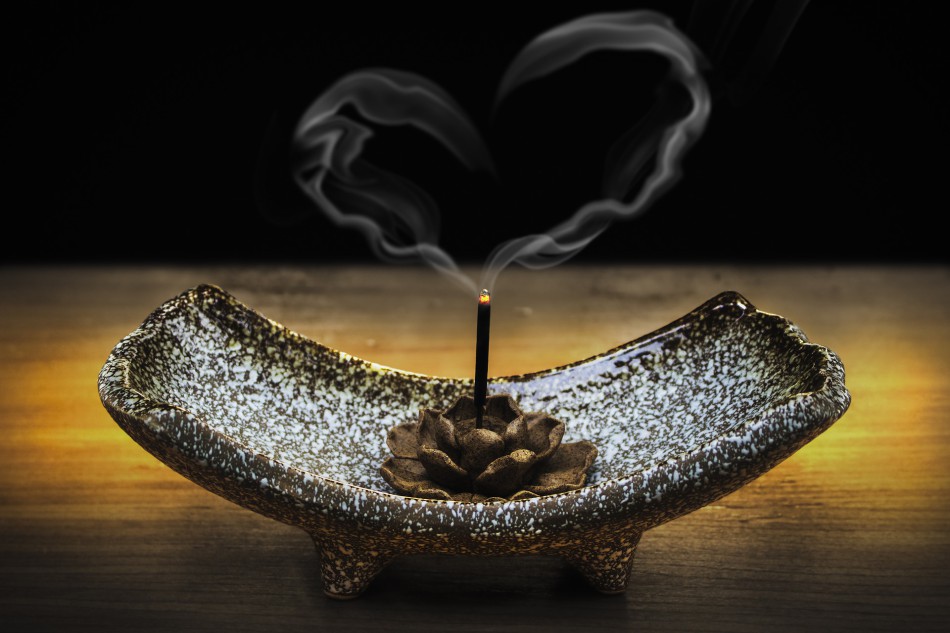Waving smoke from sacred fires or burning herbs or incense for purification has been a common practice among many traditions throughout the ages. It is said to be a bridge to the higher realms; a way to clear spiritual and emotional negativity that has built up in a space or a person. According to scientific research, the act of smudging has actually been shown to literally clear the air.
Science explains the effects of smudging
Ambient smoke is not directed at the body at all, but is used as an air purifier. Burning sage and other herbs neutralize positive charges and release negative ions, and have antiseptic as well as bacteria-killing properties. In 2006, a scientific paper entitled Medicinal Smoke was published, showing reviewed research from more than 50 countries. It was found that dating back to ancient times, smoke administered medicinally is typically used to aid lung, brain, and skin function. It was also found that the passive fumes doubled as an air purifier.
A follow-up paper from 2017 in the Journal of Ethnopharmacology examined the air purifying effect of smoke-based remedies and concluded that in addition to health benefits, smudging was a powerful antiseptic. The researchers observed that a one-hour treatment of medicinal smoke (Havana Sámagri) in a closed room reduced airborne bacterial counts by over 94 percent.

It has been believed for thousands of years by spiritual adapts from around the world that medicinal smoke, together with the vibrations that for example the mantras produce, creates positive effects in the surrounding atmosphere.
Further research has shown that ambient smoke from a variety of herbs is highly effective in reducing airborne bacteria. According to a research abstract published in the U.S. National Library of Medicine, medical smoke reduces airborne bacteria. The researchers noted that:
“We have demonstrated that using medicinal smoke it is possible to completely eliminate diverse plant and human pathogenic bacteria of the air within confined space. The absence of pathogenic bacteria in the open room even after 30 days is indicative of the bactericidal potential.”
Different cultures and smudging
The traditional indigenous Australian healers used leaves or the bark from various plants to create smoke during their ceremonies. There are claims by Australian native people, that the Ngangkari healers among them have been practicing their healing tradition for 60,000 years. Yes, that is a remarkable number and might throw up some bigger questions in the heads of pre-history critics.
Traditionally, the leaves of the emu bush were placed on hot embers for therapeutic use around stilling mothers. The resulting wet, steamy smoke was possibly an inhibitor of bacterial or fungal pathogens and even stimulated the milk let-down in women after childbirth.

In Southern Africa, the smoke of Imphepho, also known as Licorice-plant or African sage, is used by the indigenous healers to either invoke a trance state, cleanse energy, or as an offering during prayers. The Egyptians, Greeks, and many other cultures used frankincense and myrrh as a part of their religious ceremonies.
Even today, in the Catholic Church, the so-called Pontifical blend of resin incense is still used. The recipe is said to date back to the Three Kings. The Pontifical blend uses a combination of frankincense, myrrh, benzoin, and stoax, and is used, even today, to create an atmosphere for praying and tranquility.
In ancient China, a burning herb called moxa was pressed into a stick form was harvested from the mugwort plant. It was referred to as the plant of healing and was used a lot in the therapeutic practice of traditional Chinese medicine. Mugwort has been used alongside acupuncture for more than 3,000 years in China.
“A disease that may not be treated by acupuncture may be treated by moxibustion,” referencing the Lingshu Jing (Miraculous or Spiritual Pivot), in the Neijing Suwen (The Yellow Emperor’s Classic of Internal Medicine), the earliest known book on Chinese medicine compiled around 305-204 B.C.

Gerald Weissmann, M.D, Editor-in-Chief of the FASEB Journal, citing a study published in 2008 by the Federation of American Societies for Experimental Biology, says:
“This study also provides a biological explanation for millennia-old spiritual practices that have persisted across time, distance, culture, language, and religion — burning incense really does make you feel warm and tingly all over!”
Conclusion
Judging from the personal experience many have had and from the scientific research on the properties and effects of burning herbs like incense and smudging, there is a lot of truth in the so-called stories and myths passed down from the ancients.
While we are able to verify much of what the ancients left us in terms of spiritual and ritual knowledge, as seen through the analytical and skeptical eyes of modern-day science, we are still challenged with the quest to learn how they came to know all of this.








